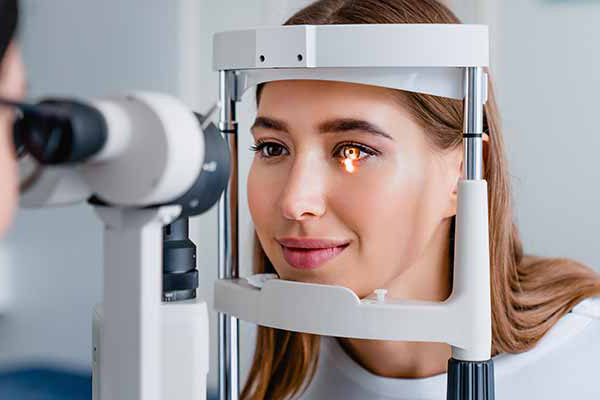Neurologist in Andalusia: Leading Specialists and Clinics Listed
Neurologist in Andalusia: Leading Specialists and Clinics Listed
Blog Article
The Pros and Disadvantages of Various Refractive Surgeries for Boosted Eyecare

LASIK Surgery
LASIK surgical procedure is a generally performed refractive treatment that intends to deal with vision concerns such as farsightedness, astigmatism, and nearsightedness. Throughout the procedure, a thin flap is created on the cornea, and a laser is used to improve the underlying cells, dealing with the refractive mistake.
One of the primary advantages of LASIK surgical procedure is the fast improvement in vision experienced by several patients. It is necessary for people considering LASIK surgical procedure to undergo a detailed assessment by an eye treatment professional to identify if they are ideal candidates for the procedure.
PRK Treatment
The PRK treatment, likewise called Photorefractive Keratectomy, is a kind of refractive surgical treatment that intends to correct vision issues comparable to LASIK surgery. Unlike LASIK, which includes developing a flap in the cornea, PRK works with the surface area layer of the cornea. Throughout the PRK treatment, the external layer of the cornea, called the epithelium, is gotten rid of to permit reshaping of the underlying corneal tissue with an excimer laser. This reshaping aids to remedy refractive errors such as astigmatism, farsightedness, and nearsightedness.
One of the advantages of PRK over LASIK is that it removes the threat of flap-related problems given that no flap is developed throughout the surgery. In spite of the longer recovery duration, PRK can be an appropriate alternative for individuals looking for vision adjustment surgical procedure.
SMILE Surgical Treatment
A sophisticated refractive surgical treatment strategy getting popularity in the field of ophthalmology is SMILE Surgical treatment. Small Cut Lenticule Extraction (SMILE) is a minimally invasive procedure that fixes vision by improving the cornea using a femtosecond laser. Unlike typical LASIK surgical treatment, SMILE Surgery includes developing a little laceration in the cornea to extract a lenticule, which causes less disruption to the corneal framework and potentially quicker recuperation times.
One of the primary advantages of SMILE Surgical procedure is its ability to treat myopia (nearsightedness) and astigmatism with high accuracy, resulting in excellent visual end results for clients. The minimally invasive nature of the treatment also minimizes the threat of problems such as dry eye disorder, making it a beneficial alternative for individuals seeking refractive surgical procedure.
LASEK Method
Having explored the benefits and considerations of SMILE Surgical treatment, another significant refractive surgical procedure strategy worth examining is the LASEK Technique. LASEK, which represents Laser-Assisted Subepithelial Keratectomy, is a form of laser eye surgery that aims to fix refractive errors such as nearsightedness (nearsightedness), hyperopia (farsightedness), and astigmatism.
Unlike LASIK, LASEK does not include producing a corneal flap. Instead, during a LASEK treatment, the surgeon makes use of a diluted alcohol solution to loosen up the thin outer layer of the cornea, known as the epithelium.
Among the main benefits of LASEK is that it can be appropriate for people with slim corneas that might not be great candidates for LASIK. In addition, LASEK commonly leads to minimal post-operative discomfort and a quicker recuperation time compared to PRK. However, the visual recovery navigate to this website procedure with LASEK may be a little longer than with LASIK.
Implantable Contact Lenses
Implantable Call Lenses use a long-term vision improvement service for people seeking a choice to standard call lenses or glasses. These lenses, likewise referred to as phakic intraocular lenses, are great site surgically inserted right into the eye to fix refractive mistakes such as nearsightedness (nearsightedness), hyperopia (farsightedness), and astigmatism. neurologist Andalusia. Unlike typical get in touch with lenses that rest on the surface area of the eye, implantable contact lenses function within the eye itself, providing clear vision without the demand for daily upkeep or elimination
Among the key advantages of implantable call lenses is their durability. Once inserted, they can remain in the eye indefinitely, offering steady and constant vision modification. In addition, these lenses can be an outstanding option for people who are not great candidates for laser eye surgical treatment or that prefer a reversible vision modification treatment.
Nevertheless, implantable call lenses do lug some threats, including the potential for cataracts or raised eye pressure. It is important for people considering this choice to speak with an eye treatment professional to determine if implantable call lenses are the right option for their specific needs and eye health.
Conclusion
Finally, each kind of refractive surgery has its very own benefits and negative aspects. LASIK surgery is preferred for its fast healing time, while PRK procedure may appropriate for patients with thin corneas. SMILE surgical treatment provides minimal discomfort during the procedure, but LASEK strategy might have a longer recovery process. Implantable contact lenses provide an alternative for those who are not appropriate prospects for standard surgeries. Individuals ought to speak with their eye treatment copyright to identify the most effective option for their specific requirements.

Generally, SMILE Surgery offers a promising choice for individuals looking to enhance their vision with refractive surgical procedure.
Report this page